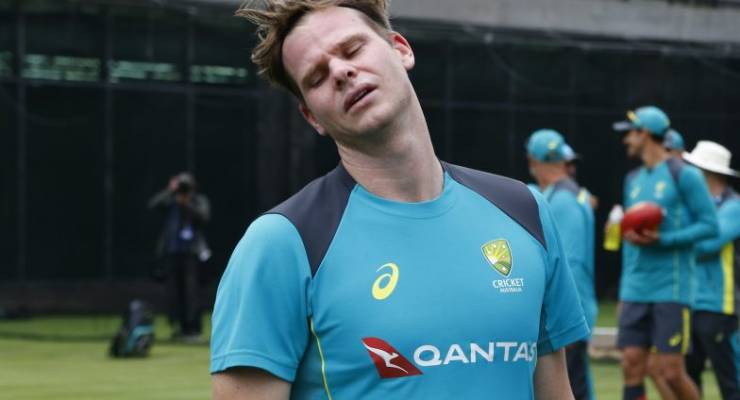
Former Australian captain Steve Smith.
Another week, another Australian institution in chaos hiring new management.
Kevin Roberts has been chosen to replace James Sutherland as Cricket Australia’s CEO. Roberts has been a member of the board since 2012, before being elevated to the executive in 2015, eventually making it to chief operating officer earlier this year. In the press conference announcing his appointment on Wednesday, he asked that he be judged on future actions, not past events.
It’s not hard to see why he would want that — Roberts takes over an organisation riven for the past few years with scandals and a fetid institutional culture, that shows itself both off and on the ground. Just last month, England all-rounder Moeen Ali said an Australian player had racially vilified him by calling him “Osama” during the 2015 Ashes series.
As former coach Mickey Arthur — who was himself sacked after several high-profile scandals involving player behavior and team culture — wrote back in March:
Despite generational change, independent reviews and too many behavioural spotfires to list, Cricket Australia and the national team had demonstrated no real willingness or desire to improve the culture within their organisation from season to season.
That could lead to only one conclusion.
An explosion.
Here’s a taste of the carnage Roberts is left to reckon with:
Ball tampering
It was the greatest scandal to ever engulf an Australian cricket team — which, given the history of a side that has never gone out of its way to be popular, and which has frequently put winning ahead of of any other consideration, is saying something.
In a test against South Africa in March of this year, footage captured rookie player Cameron Bancroft scratching the side of the ball with sandpaper. Steve Smith and David Warner, then captain and vice captain respectively, eventually came forward as the architects of the decision, kicking off a saga that would decapitate the side of its best players, and garner so much attention that several baffled non-cricketing fans would need explainers on what ball tampering is and why one would bother doing it.
After the initial shock, and the loss of a series of sponsors — both institutional and personal — it became clear that the scandal was something of a synecdoche for the wider problems of CA.
As Fairfax sports writer Chris Barrett put it:
Questions must go right to the top about the whole team’s culture when such a plan can be devised on the hop and there is no one around to put a stop to it. The culture of the team is Smith’s domain, but also that of coach Darren Lehmann, even if the captain insists that he wasn’t involved.
Along with the suspensions handed down to Smith, Warner (both 12 months) and Bancroft (nine months), Lehmann stood down soon after.
In April, former player Rick McCosker was appointed to head a panel reviewing cultural, organisational and governance issues in Australian cricket. The review isn’t done yet, but apparently isn’t going to suggest “anything too drastic”. Well, that is good to know.
Sacked for a tweet
Troubling culture has been found off the field too. In July, former CA government relations and infrastructure manager Angela Williamson alleged in Fairfax Media that she had been sacked for tweets she posted on her personal account, calling for greater access to abortion in her home state of Tasmania.
It was alleged this came about after political pressure from Tasmanian Premier Will Hodgman and Health Minister Michael Ferguson. Williamson was sacked 10 days after her employer called Ferguson to apologise for her tweets, and in return, Ferguson told her boss that Williamson had had an abortion. Williamson has now settled with CA, after preparing to take her former employer to federal court.
Pay dispute
It’s almost forgotten now, but across the first half of 2017, there was the protracted pay dispute between CA and the players’ association. CA wanted to shift the payment model to be a share of profits, away from the fixed share of revenue that players favoured (and which had been in place for nearly 20 years).
The issue dragged on to the point that it left more than 200 players technically unemployed, put media negotiations on hold and resulted in the “A” team (Australia’s second XI) boycotting a tour of South Africa. CA were pilloried across the media for their handling of the negotiations.








Crikey is committed to hosting lively discussions. Help us keep the conversation useful, interesting and welcoming. We aim to publish comments quickly in the interest of promoting robust conversation, but we’re a small team and we deploy filters to protect against legal risk. Occasionally your comment may be held up while we review, but we’re working as fast as we can to keep the conversation rolling.
The Crikey comment section is members-only content. Please subscribe to leave a comment.
The Crikey comment section is members-only content. Please login to leave a comment.